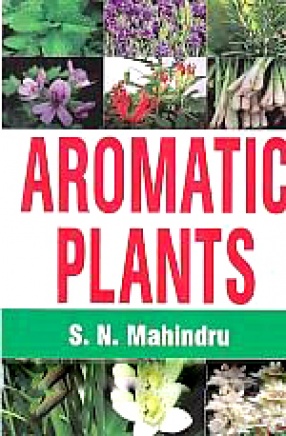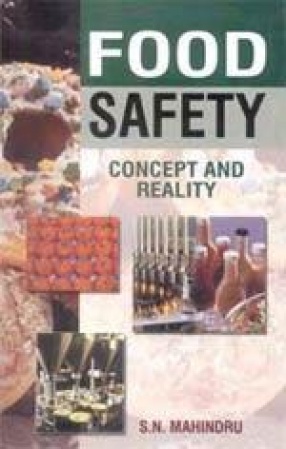
S.N. Mahindru

Showing all 16 books

















India produces a wide range of spices and Condiments. According to Spices Board of India, at present, the total producation we the country is around 3.2 million tonne, and it is estimated to be worth $ 4 billion.
The figures provided by the Spices Board indicate that India is among the largest produces, consuners and exports of spices in the would India produces different varieties of our 65 ant of 109 spices and condiments listed the Indian Standards Institute. ...

A few monographs/books did appear about some natural essential oils. These were descriptive only about the traditional modus of production at few essential oils. In the last decade work on perfumes and flavours accelerated and reported in the Indian Perfumer or in the proceedings on seminars of the Perfume and Flavour Association of India. Consequently there was a need for an updated book in the present form.




"Chillies, the dried ripe fruits of the species of genus capsicum, also called red peppers. Capsicums constitute an important well-known commercial crop used as a condiment, culinary supplement or as a vegetable. Chillies are virtually an indispensable item in the kitchen.India is the largest producer of chillies in the world accounting for over 45% of the total area under cultivation. About four decade ago (1970-71), India produced 520,400 tonnes of chilies ...

Basmati Rice is accepted as the best scented, longest and slenderest rice in the world and the Indian subcontinent continues to be its homeland. Both India and Pakistan have a monopoly over its production and marketing in the world markets. Presently, both these countries together export around five and a half lakh tonnes of good quality Basmati Rice. Much work has been reported on the agricultural improvements made in the quality and yield of Basmati paddy and ...

Spices and condiments are a major commercial crop in India, and earns foreign exchange worth Rs. 3620 million annually, yet books on spices and condiments relevant to the Indian context are few and far between. There is no single compedium which deals with all aspects and facts of spices and condiments which may meet the requirements of all those handling them at various stages, from harvesting to their end-use. Manual of Indian Spices takes care of all these ...

Of all the various toxic chemical contaminants in a food, the identification and quantitation of pesticides, heavy metals, metallic micro-nutrients as well as aflatoxins has gained more importance than the earlier determination of physico-chemical contents of various foods and in the event of non-observance of statutes related to these contaminants under the PFA Act, 1954 and its Rules, 1955, has considerable bearing on the marketing of food products. ...

There is no doubt that several commentaries on the PFA Act, 1954 and its Rules, 1955 are there. All these are from the litigative and judicial angles. Techno-analytical aspect and its implications have never been discussed despite their major role in the enforcement of the above Act and its Rules. The result being that the malady of safe and pure food still exists. Several tasks forces, comprising the best legal luminary of the country, constituted by the ...

In India we have norms for bottled mineral water. We have also norms for drinking water, bottled, unbottled as well as aerated waters. Next in the category comes potable water about which no body knows precisely what it is, how much it is available and how much safe it is? Potable water is not drinking water. It is drinkable water. It is so vital for the millions of Indians living in India. an attempts has been made to present a comprehensive and precise ...

Microorganisms, parasites and insects are ambiquitos in nature. Some of them are pathogenic and the rest non-pathogenic. Even the very best food manufacturing processes, based on most careful attention to hygiene cannot completely rid the processed foods from microorganism. Food irradiation is a physical process for the treatment of foods akin to convential process like heating or freezing. It prevents food poisoning (salmonellosis), reduces wast-age to ...

Honey appeared much earlier than man, Accordingly bees have long association with him right from the time human race came into existence. With the passage of time, honey has emerged from the position of sweetener of the aboriginal man to that of a present day industrial product. Honey bees as pollinators of agricultural crops and orchards fruits. Were known but never understood on a rational and scientific basis. Similarly many myths associated with its ...
